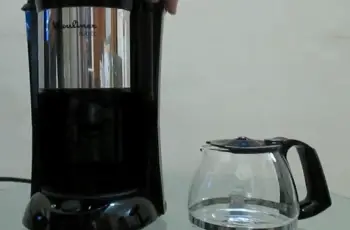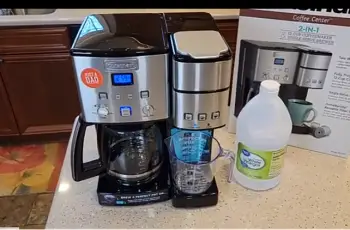How To Know How Many Amps Is A Coffee Maker
This may not be the usual information users are on the lookout for, but understanding the amperage your coffee maker requires is essential for grasping its power consumption. Every coffee maker operates on a certain amount of amps, which are units measuring electrical current, directly influencing the amount of power the device consumes and, as a result, how much it costs to run your coffee maker. Wondering about the amperage of a coffee maker? Keep reading. This article will provide you with all the necessary details regarding amps and how they relate to your coffee maker.
What Is Amps
The Amp is the shorter, more convenient and more popular form of Ampere which is the unit of measuring electrical current. It is typically the speed at which electrons flow through a conductor, and it is used to measure the strength of electricity. It does have a direct influence on the power consumption of your coffee maker, because it is one of the variables that will result in power. When the ampere is multiplied by the volts, the result is power. So, amps can be derived by dividing the power of a coffee maker by the volts, which is usually 120V.
How Many Amps Does My Coffee Maker Draw
A coffee maker will not draw a significant amount of amps. Although this depends on the size and capacity of the coffee maker. A normal drip coffee maker should draw about 5-10 amps per brew. Although this can vary sometimes. If you want to know the exact amount of amps that your coffee maker draws, check on the box of the coffee maker if you can still lay hold of it. If you cannot, then your next option will be to check the specifications in the user manual. And the last option is to check the the name plate of the coffee maker. It will be written on it. If you know this, then you can easily calculate how much power your coffee maker uses.
What Is Watts
Watts is the unit of measurement of power. It measures how much power an electrical appliance uses, including a coffee maker. It is derived by multiplying the amps which measures the current by the volts, which measures the Voltage, which is usually 120V. This is what determines how much your coffee maker adds to your electricity bill. Though it might not be much, but if you intend to reduce how much you spend on electricity, then knowledge of how many watts your coffee maker consumes and how to reduce it, will be your best bet at reducing your electricity bill. This doesn’t apply to just coffee makers, but also to every other electrical appliance you own. It is quite different from the amps, and should not be confused with each other for any reason.
Amps Vs Watts
A lot of people tend to mistake amps for watts and mistake watts for amps, but that shouldn’t be. They are completely different things and they serve very different purposes though they both work together. As earlier stated, amps is the unit of measurement of current which is the amount electrons flowing through a conductor, while Watt measure power which is the amount of power used as a result of the amount of current and voltage. If we analyze all these using water flowing through a hose, while amps is the measurement of how much water is flowing through a water hose, volts is the pressure causing the water to flow and watts is the power resulting from the pressure and amount of water that is flowing. Now we can see that they are very different. Despite this fact, they are also not independent of each other when considering a coffee maker. Because these variables work together. Without the electrity flowing through the wires, and the volts pushing it ahead, there won’t be any power result, and no coffee brewed. I’m sure this is clear.
Tips To Reduce Electricity Consumption In My Coffee Maker
Since we now understand how electricity is being consumed in a coffee maker, then we can go ahead and discuss how it can be reduced. First we will talk about what a coffee maker uses electricity for. A coffee maker uses the bulk of its electricity consumption for heating water, it then uses more to propel the water through the coffee grounds and then uses electricity to keep the coffee warm if it has heating plates. Although the bulk of electricity is being used to heat up water, it should not be a reason why you will use hot water in your coffee maker. Cold water always! Now let’s get to how electricity consumption can be reduced.
- Clean your coffee maker often. If there are scales in your coffee maker, there is a possibility that it will take longer time to brew, and this will result in increased consumption of electricity. Follow manufacturers guidelines on how to clean your coffee maker and how frequently it should be done.
- Brew large amounts of coffee. If you’re working from home and would be needing a cup of coffee every now and then, instead of brewing whenever you want a cup of coffee, you should brew a large quantity and store in thermos. This will help reduce electricity usage.
- Turn off the coffee maker when it’s not in use. There is no reason why you should leave your coffee maker on if it’s not in use and you don’t intend to use it in a short while. Rather than leaving it on, turn it off, and conserve electricity.
- Use energy-efficient coffee makers. They generally don’t consume a lot of electricity.
Conclusion
Either directly or indirectly, the amps of a coffee maker will influence how much it adds to your utility bills. While it might not be much, it can still be reduced. Amps vary based on the capacity of the coffee maker. Larger coffee makers will most likely use more amps than smaller coffee makers. You can find out your coffee maker’s amps by checking in the user manual or the coffee maker’s name plate. When you find that out, you can easily tell how much power your coffee maker uses. And that will make it all clear.


